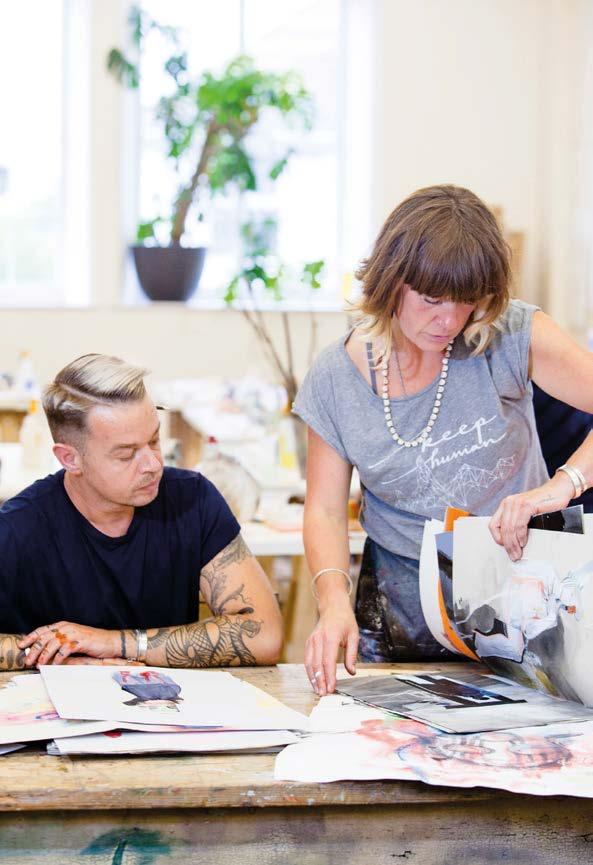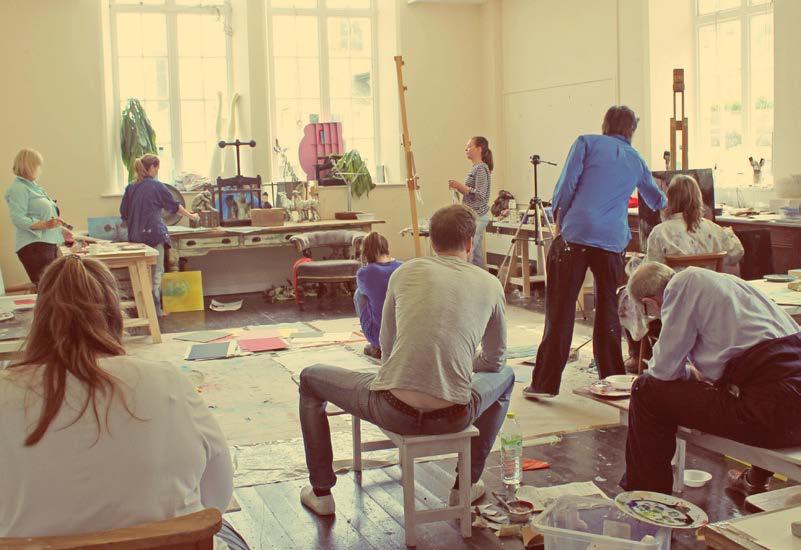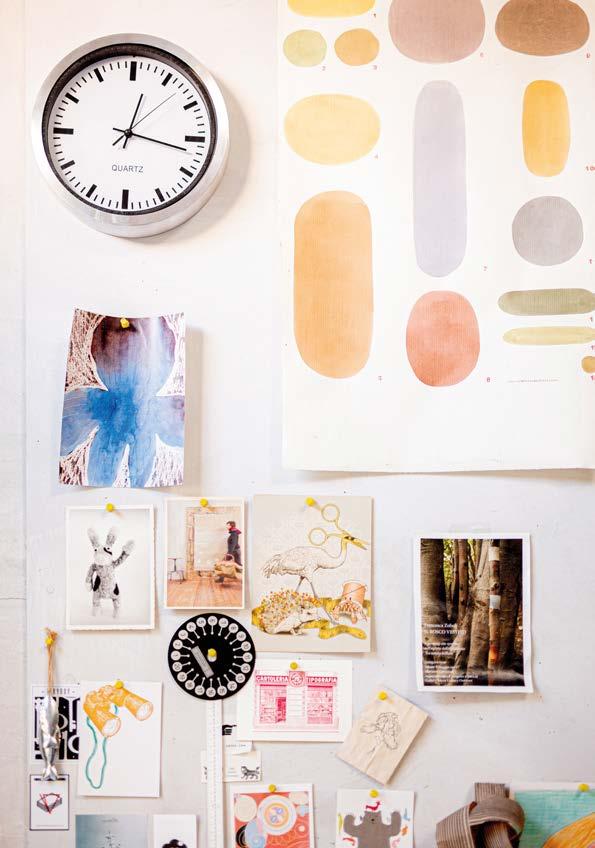
4 minute read
Quick Tips
QUICK TIPS
Paint with Purpose Newlyn Art School’s popular Defining
Practice course will soon be available online.
Tutor FAYE DOBINSON shares 10 tips to help you become a more focused artist
1. NOTICE WHAT YOU NOTICE
Whether you are a painter, a printmaker or even a sculptor, gently instigating a regular drawing habit will feed your practice enormously.
Quick sketches of anything around you, whether in your home or out in the environment, will soon show you what it is that your eye is drawn towards and where your gaze naturally falls.
2. GATHER YOUR INSPIRATIONS
Making time to research artists that resonate with you is both inspiring and validating. You can begin to think of yourself as part of a lineage and themes that you might not be able to see clearly in your own work may emerge in that of the artists to which you are drawn.
Trust your instincts. Keep a sketchbook, a folder or a Pinterest board and collect inspiration from magazines, books or the internet.
3. CALM YOUR INNER CRITIC
Our internal critic can run roughshod over our dreams and our enthusiasm, leaving us questioning good ideas when we have them.
Before you dismiss your next idea, try to give it a form first – be that as a drawing, a gathering of objects, or a note in a sketchbook. In doing so, it is easier to look at the idea from all angles, so that you can ask questions of it, and decide whether you wish to pursue it further.
Dismissing anything in its tender phase does the creative conversation a great disservice.


LAURA ADAI/UNSPLASH/EMMA GRIFFIN/NEWLYN SCHOOL OF ART


4. LET THE PROCESS LEAD
I am what I would call a very “process led” artist. This means that rather than working towards a specific idea, I lay out the materials and mediums that are resonating with me and then I begin to make, letting those materials begin their own journey towards a finished piece.
If you struggle to settle on an idea or a subject, why not try this approach. By establishing a fertile space where inspiration and “happy accidents” can occur, I end up creating things that I never could have planned.
5. MAKE WORK ABOUT WORK
Try viewing a problematic piece that you are working on as a source for other artworks. If a painting feels unresolved or intriguing yet unsatisfying, try making a drawn study of it, or a collage based upon it.
Viewing your art through the filter of a different process pushes you to respond in a different way and not just look but really see.
LAURA ADAI/JASON LEUNG/UNSPLASH/NEWLYN SCHOOL OF ART 6. REMEMBER YOU ARE USEFUL
The arts have had a rough time of late. One thing I’ve taken great heart from has been the restoring of the role of art and creativity into the lives of many through these testing times.
Art is a language and a means of expression that speaks to people on emotional and psychological levels; it can uplift, restore and inspire. We, as artists, must not forget how useful we are in reminding people of that. 7. WORK IN SERIES
A wonderful way to take the pressure off yourself and your current painting is to work on more than one at once. Far from diluting the results, it enables concerns, decisions and imagery that we might pour into one piece to be explored in several.
Pieces developed simultaneously often begin to speak to one another, gelled together through proximity and a particular method. You’ll be more productive too, able to work on one while another dries.
8. TRY NEW WAYS OF MAKING
Sometimes we tire of our own artistic language yet don’t know how else to express ourselves. A comfort zone is necessary and even restorative sometimes, yet a foray into another way of making can also refresh us and our work.
At Newlyn Art School, we often encourage students to use photography to look at ideas of place and landscape. This can help them to notice that their way of seeing the world is as individual and valid as everyone else’s.
9. DON’T TRY TO FINISH EVERYTHING
Think of each piece that you make as a stepping stone to the next. Holding this truth allows a little more freedom within – and a little less pressure upon – our creative process.
If you get easily disheartened when a piece has not turned out the way you had imagined it might, avoid berating yourself and try to see it instead as one that needed to come out – one that cleared the way for the next.

10. FOLLOW ENTHUSIASM
There is an idea that great art only comes from suffering. While that can be true, it can also come from joy, exuberance, tenderness and enthusiasm.
Follow your enthusiasm and curiosity for they are your wayfinders, your creative GPS. Think of them as a huge well of energy that will sustain you on the (often rocky) road to making great art. Faye is a leader on Newlyn Art School’s year-long Defining Practice course. An online version will be available from May 2021. www.newlynartschool.co.uk










